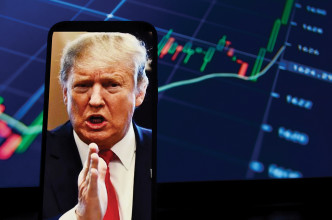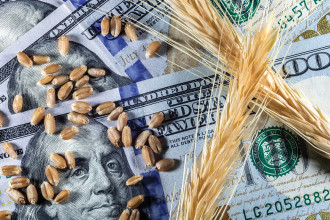
Gold is driven by numerous factors that provide the tailwinds for the prices to soar higher while others offer headwinds to stop the rally. However, in recent times, various factors have been unable to withstand the pressures of gold climbing to unimaginable heights. One of the driving factors i.e. interest rates inevitably weaken the buying pressure on the yellow metal. Historical patterns and prices have proved this theory. But it seems nothing can stop the rally of gold, not even the interest rates and the US Federal Reserve policy shifts at the moment.
Gold has summited new heights with an increasing segment of the global population hitting the panic button. More people have turned to the safe haven asset in due course. The performance has largely shaken the financial markets and altered the historically maintained correlations with equity and bond markets.
On May 1, 2024, in its monthly report, the US Federal Reserve stated that it will maintain the Federal Funds Rate at 5.5%. Given the CPI reading of 0.3%, the policymakers at Fed are now unlikely to meet expectations for the three cuts in 2024. Analysts opine that the first cut was initially forecast to occur in June but the expectations have now changed and the first cut might happen in September.
Market analysts have stated that gold should be hurling in a downward spiral with the current rates. But, the buoyant valuation of gold is beyond the rates and more a function of geopolitical tensions. For example, Iran launched an attack on Israel on April 13 adding to the escalating tensions in the Middle East. Along with the ongoing Ukraine-Russia war, the increasing conflict between China and Taiwan has aggravated the lingering concerns that could rattle global markets and boost the safe haven status of gold.
The recent decoupling of gold from the treasury yields confirms the belief that the metal is increasingly being used as a trusted indicator for long-term ambiguity as opposed to yields which have become more of a near-term measure for where rates could head. When the bullion rose to then all-time high last December, it was following the historical yield convergence as the markets forecasted six rate cuts. However, it is now following the opposite since the beginning of 2024 as the outlook for rates turns bleak. In recent days, the markets have observed stagflation, high deficits and geopolitics as larger drivers of uncertainty than interest rates.
The closure of the pandemic era has brought an unprecedented amount of uncertainty that has made gold increasingly attractive. Similarly, silver, traditionally not perceived as a safe haven asset, has also benefitted from the current environment.
Like copper, gold is instrumental in gauging the state of the economy. For example, uncertain elements could push prices higher but improving global economy will drive gold prices lower. The sentiments of gold traders are the leading determinant in the valuation of gold. However, geopolitical uncertainties coupled with currency values and other macroeconomic factors will undoubtedly shift the mindsets of these traders.
In assuming the global nature of the gold market, where one determinant can offset the influence of the others, it can be concluded that the impact on gold will solely be based on the strength of these factors. While the importance of the Federal Reserve and interest rates cannot be undermined, it is not the only factor driving gold forward. What’s next for gold remains to be seen but the forthcoming days, weeks and months may introduce another brewing component which will take the markets by storm.






